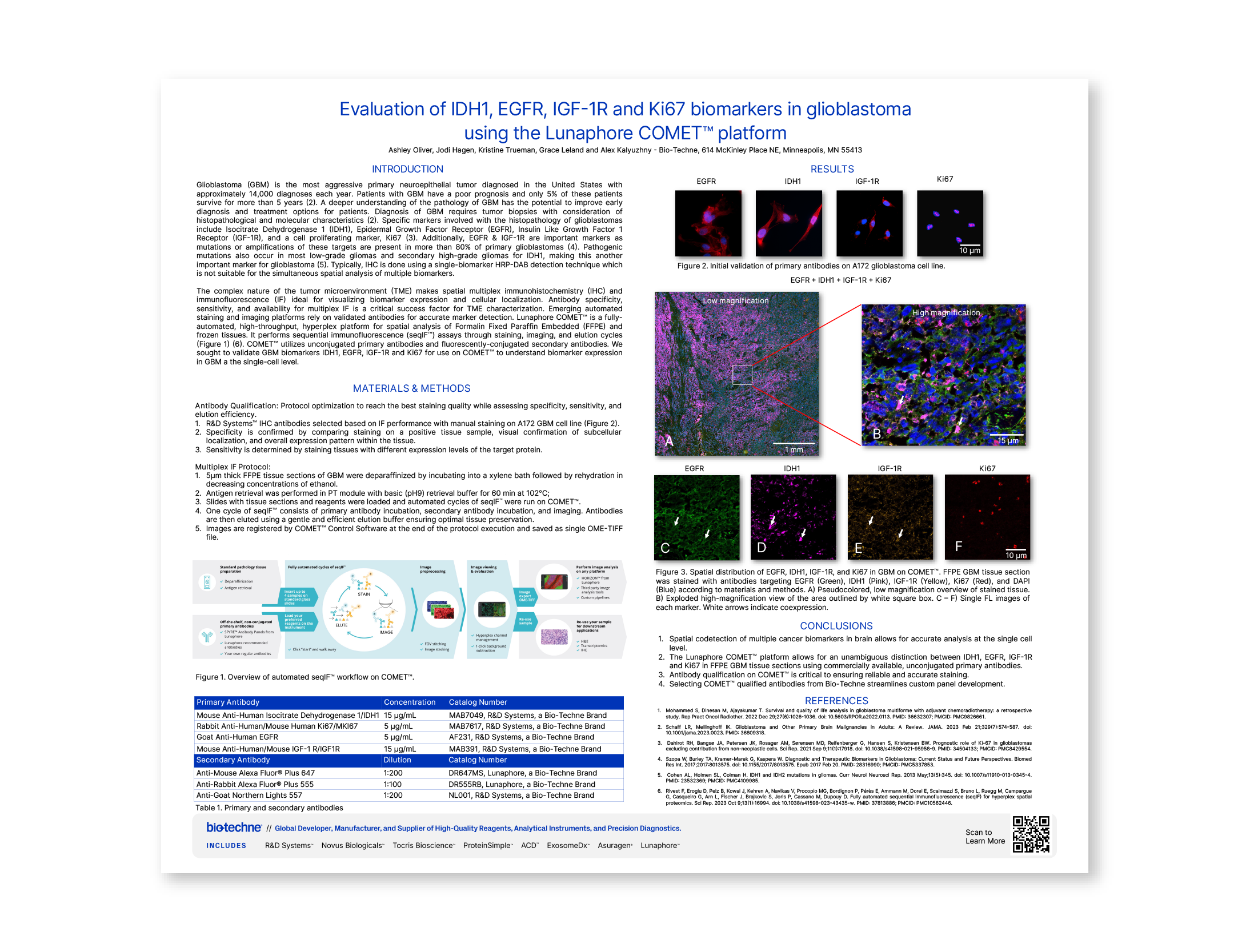Evaluation of IDH1, EGFR, IGF1R and Ki-67 Biomarkers in Glioblastoma using Lunaphore™ COMET™ Platform
by Ashley Oliver, Jodi Hagen, Kristine Trueman, Grace Leland and Alex Kalyuzhny.
Scientific Meeting PostersGlioblastoma (GBM) is an aggressive primary neuroepithelial tumor with a poor prognosis: only 5% of patients survive beyond five years post-diagnosis. Current diagnosis techniques include immunohistochemistry (IHC) using a single-biomarker HRP-DAB detection technique, which is unsuitable for the simultaneous spatial analysis of multiple biomarkers.
Previously, we developed a manual protocol for multiplex immunofluorescence (mIF) to co-localize biomarkers IDH1, EGFR, IGF-1R, and Ki-67. In this study, we have advanced to a fully automated protocol, on the COMET™ platform from Lunaphore, a Bio-Techne brand. Multiplexing on COMET™ is based on sequential immunofluorescence (seqIFTM)1, a process involving successive cycles of staining-imaging-elution, without any human intervention.
Download this poster to see spatial biology analysis of the distribution and colocalization of IDH1, EGFR, IGF-1R, and Ki-67 across entire GBM tissue sections. Learn how our rigorous antibody qualification process on the COMET™ platform enables specific staining of multiple biomarkers at the single-cell level. Learn how R&D Systems antibody expertise and a rigorous testing process on the COMET™ platform can streamline your custom panel development. More about our process and see the growing list of mIF validated antibodies here.
This poster was presented at the Society for Neuroscience (SfN)’s Neuroscience 2024 meeting in October 2024.
Reference
1 Rivest, F., Eroglu, D., Pelz, B. et al. (2023) Fully automated sequential immunofluorescence (seqIF) for hyperplex spatial proteomics. Sci Rep 13, 16994. https://doi.org/10.1038/s41598-023-43435-w
